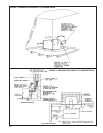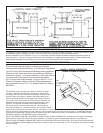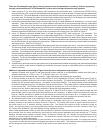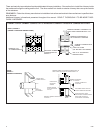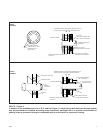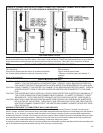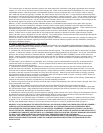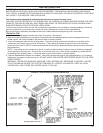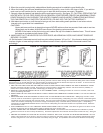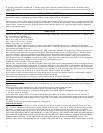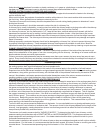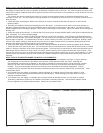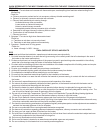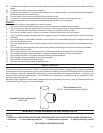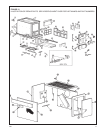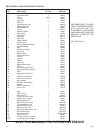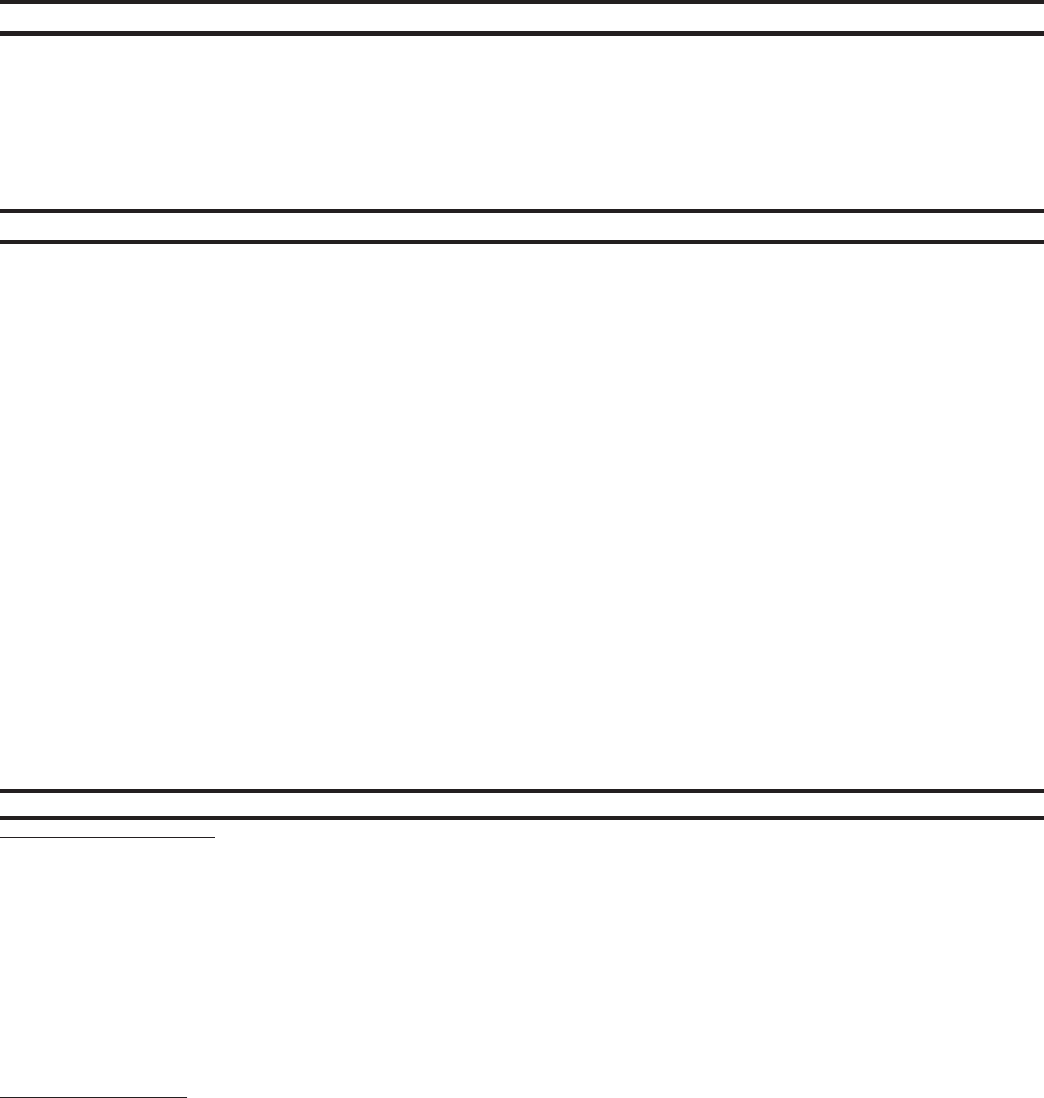
12 CAC
8. DO NOT OVERFIRE THE HEATER. If any part of the heater or chimney connector becomes red hot, the heater is being
overfired. Immediately turn the heater’s thermostat to “LO” and keep the fuel feed door and ash removal door closed until the
heater cools.
MINIMUM FIRE ADJUSTMENT
Soot is more likely to accumulate in the chimney connector and chimney liner during extended periods of low firing. This
accumulation can be reduced by proper setting of the air shutter on the ash door, see figure 9.
Rotating the air shutter to allow more air into the fire chamber will increase the rate of the minimum fire and reduce the accumula-
tion. Exoerience in a particular heating situation will give guidance in choosing the best setting. Setting changes are made with
common pliers. Set the shutter to the largest opening and use a smaller opening only if the heat output cannot be adequately
controlled by the thermostat.
COAL FACTS
Anthracite coal (known as hard coal) is the only coal with a uniform sizing scale. before leaving the coal mine, it is graded into
one to the following categories:
Nut - from 13/16” to 1-5/8” in diameter.
Stove - from 1-5/8” to 2-7/16” in diameter.
Egg - from 2-7/16” to 3-1/4” in diameter.
Broken - more than 3-1/4” in diameter.
Anthracite coal is hard to ignite; but once it is burning, it burns freely and cleanly and very hot. It does not fuse but leaves
substantial ash residue. When anthracite burns with a blue flame, it is burning properly and the volatile gases released from the
coal are being consumed by the fire.
Bituminous coal is easier to ignite than anthracite coal. Most people think anthracite has a higher heat content than bituminous,
but in actuality, some bituminous is as good as anthracite. Bituminous breaks up more in storage and burns with more smoke
than does anthracite. One other characteristic of bituminous which differentiates it from anthracite is that, as the coal burns, it
tends to form clinkers whereas anthracite is reduced mainly to ash. Clinkers are the mishappen, rough, gray lumps that form
when particles in the coal are heated, melt and fuse together. When bituminous burns with a yellow flame, it is burning properly
and the volatile gases being released from the coal are being consumed by the fire.
Of these two coals, anthracite is the more expensive.
Store in a dry, ventilated space. Coal that is improperly stored can catch fire from heat generated by chemical changes occurring
within the coal bed (spontaneous combustion). To avoid the development of these conditions, coal quantities that will be stored
more than three days should be kept clean of all combustible materials, such as leaves, hay, wood, rags, etc., and stored where
the temperature of the air and objects the coal contacts are 75 degrees F. or less. Alternate wetting and drying of coal should be
avoided. Wet and dry coal should never be stored where each will be in contact with the other.
If the emission of heat or unusual odors from a coal storage area is observed, the process leading up to spontaneous combus-
tion may be occurring and the fire department should be called immediately.
Small quantities of coal required for firetending must be kept at least 36 inches from the heater.
HOW TO TAKE CARE OF THE HEATER AND VENTING SYSTEM (ROUTINE MAINTENANCE)
HEATER MAINTENANCE
The heater’s outer cabinet may be wiped free of dust with a soft cloth. The use of any other cleaning method may damage the
cabinet’s finish.
Check the following items regularly during the heating season to ensure proper heater operation:
1. Condition of feed door and ash door gaskets--replace if excessive wear is observed.
2. Condition of feed door, ash door, and cabinet latching pawls and handles--ebsures that operation will securely close
the door. Adjust as necessary.
At the end of each heating season, the heater should be thoroughly cleaned of all ashes. Ashes remaining in the heater in
combustion with moisture in the air can cause severe corrosion fo the heater. All rust spots on the heater should be wire brushed
and covered with a coat of high temperature paint. If the heater is to be stored until the next heating season, be sure the storage
are is dry.
The heater should never be used with damaged or missing parts.
DISPOSAL OF ASHES
The ashes should be removed from the heater anytime they accumulate to within 2 inches of the grate and at least once each
day. Chunks of ash material called clinkers may accumulate above the grate. these can be removed by shaking the grate with
the shaker. To minimize the loss of burning coal into the ash pan, do not shake the grate when a large fire is in progress.
When removing the ash pan from the heater, wear gloves to protect your hands from glowing embers and hot surfaces. ASHES
SHOULD BE PLACED IN A METAL CONTAINER WITH A TIGHT FITTING LID. THE CLOSED CONTAINER OF ASHES SHOULD
BE PLACED ON A NONCOMBUSTIBLE FLOOR OR ON THE GROUND, WELL AWAY FROM ALL COMBUSTIBLE MATERIALS,
PENDING FINAL DISPOSAL. IF THE ASHES ARE DISPOSED OF BY BURIAL IN SOIL OR OTHERWISE LOCALLY DIS-
PERSED, THEY SHOULD BE RETAINED IN THE CLOSED CONTAINER UNTIL ALL CINDERS HAVE THOROUGHLY COOLED.



